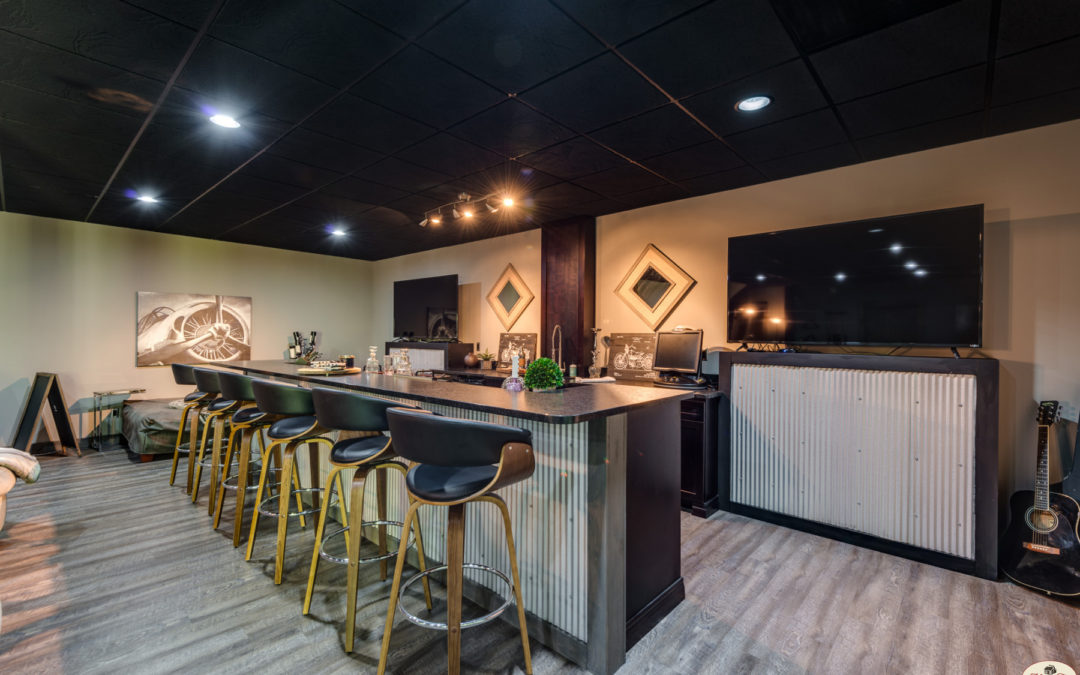by Claudia Johnson, Honest Abe Log Homes
Oftentimes Honest Abe homeowners plan a specific area of their log or timber frame home solely for relaxation and entertainment. One such area is a built-in bar.
If you’re planning to add a bar to your home, you’ll want to make sure your Honest Abe sales representative or Independent Dealer knows what you have in mind so your plan can incorporate your bar into your plans from the beginning.
Location
First, you’ll want to determine where the bar will be located. Lots of homeowners place the bar in a finished basement that includes other entertainment options like a pool room, home theater or adjacent outdoor living space.
Of course, the bar should be built into the part of the home where it will be most accessible for its intended use. Bars can be added to a living room, den or great room. They can be an extension of the kitchen, and they can also be located on a patio, deck or covered porch.
Wet or Dry?
Deciding between a wet bar and a dry bar early in the planning process enables the proper plumbing to be installed. Wet bars have fully functioning sinks, while dry bars sometimes have a dry sink or no sink at all.
Wired Up
Planning for the wiring and types of outlets that will be needed is also imperative. Will the bar have a refrigerator, kegerator, ice machine or wine cooler? Will television screens be installed? What about a sound system? Will there be special lighting either over the bar itself or in the back bar where beverage bottles and glassware are stored or displayed? What about refrigeration for the back bar?
Design Options
The material possibilities for use in constructing a bar are endless. We’ve seen everything from barn wood to metal to furniture-quality hardwoods. Some folks have repurposed antique furniture or even restored ornate bars that once stood in old saloons.
The same variety is available for stools. Seating can be luxurious upholstered leather chairs or simple chrome and vinyl swivels. It depends on the level of comfort and perhaps safety you want to achieve.
Elbow-height countertop rails and bar foot rail kits are available from several manufacturers that are easy to order and install, or you can design your own that complements the design of the bar.
The rule of thumb for dimensions regardless of the materials and design are 24” deep, 42” high and as long as needed, preferably with a minimum of 2” of space between bar stools, which are usually around 30” high.
Design Decisions Checklist
- Overall look and feel
- Bar surfaces
- Bar stools
- Carpentry
- Draft beer system styles (including beer towers, tap handles)
- Bar foot rails
- Bar décor, like signage
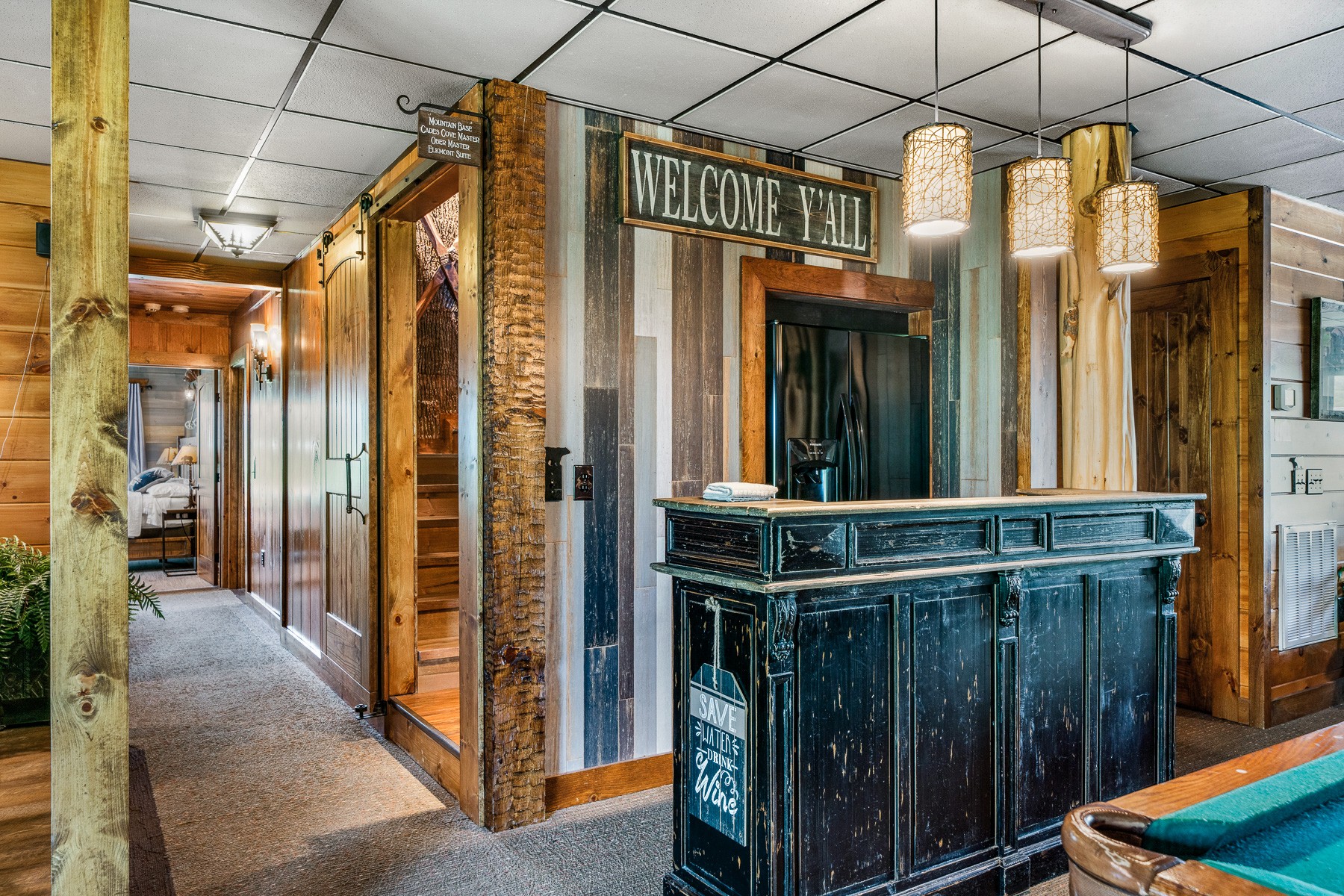
The owners of this mountain chalet designed and built by Honest Abe created a recreation room with a bar, pool table, bistro and home theater. The custom built bar is designed to appear aged with time to enhance the nostalgic design scheme of the 6-bedroom home.
A modern vibe permeates the basement of a contemporary timber frame by Honest Abe. The homeowever designed a recreation area with a wet bar, double televisions, a pool table and den area with an adjacent full bath and a home gym.
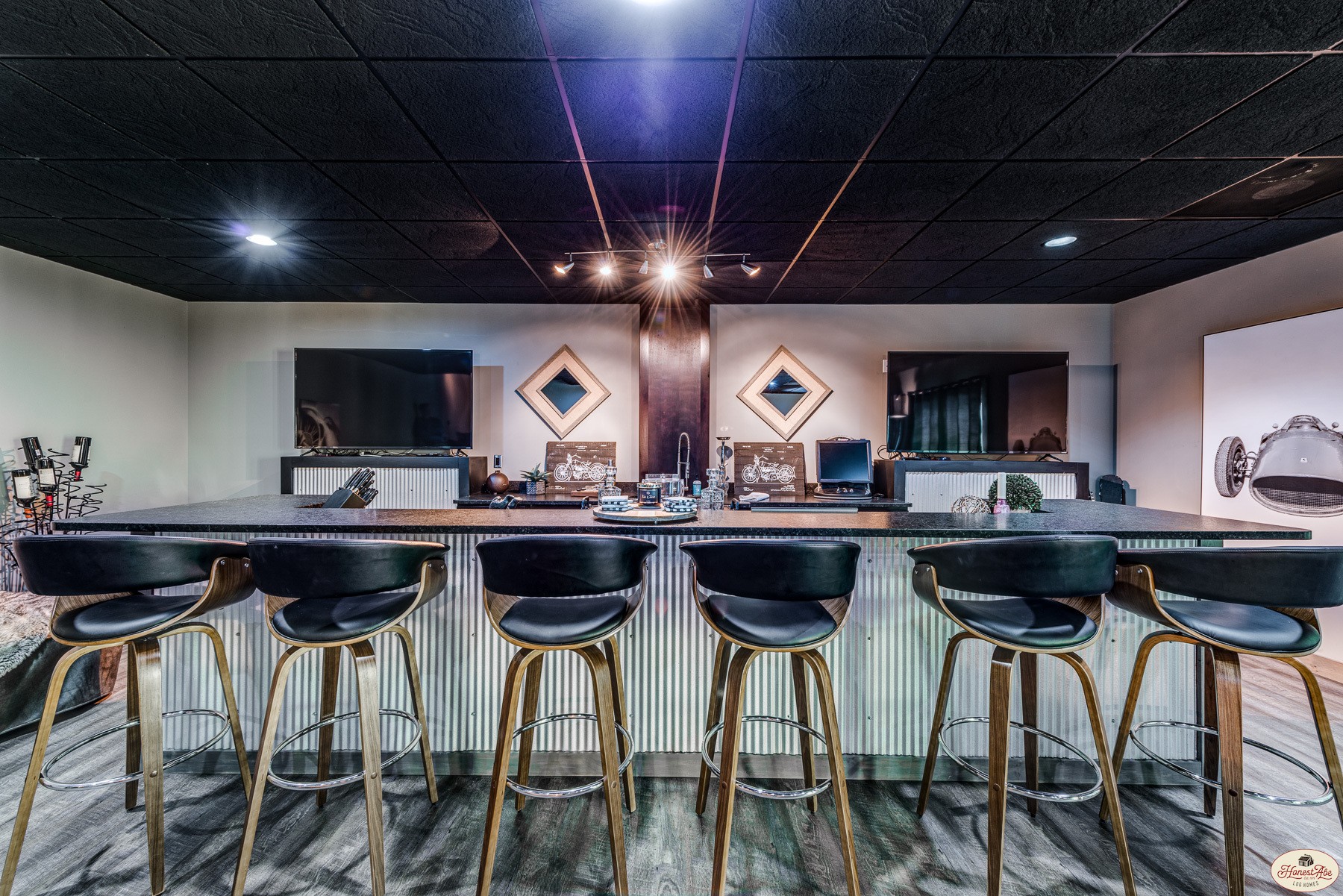
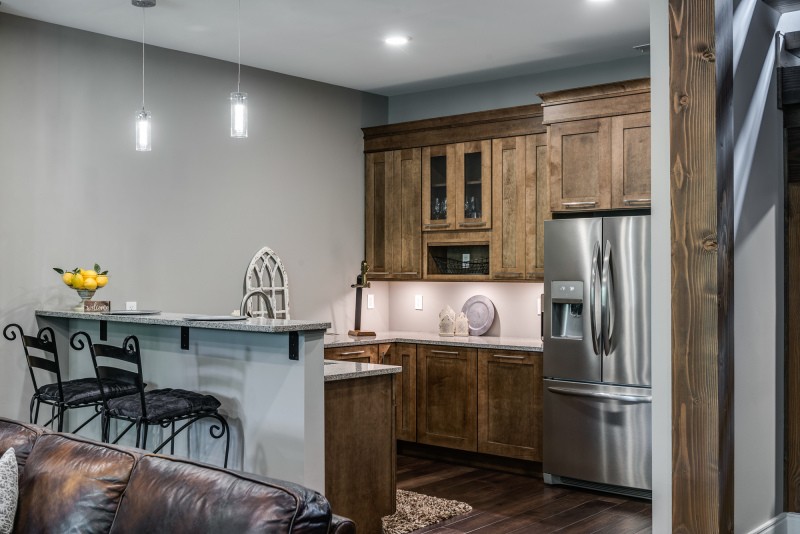
Located just outside a home theater, this bar converts easily to a juice and snack bar for the kids or a wine an liquor bar for the adults. Also in the basement room is a spacious sitting area, which opens onto a patio with a hot tub and outdoor dining and grilling area.
A fully-stocked basement wet bar in this Honest Abe homeowners’ lake view log home has all the amenities. It is located off a deck with a firepit. Also in the bar area are game tables and mounted televisions as well as a seating area for entertaining.
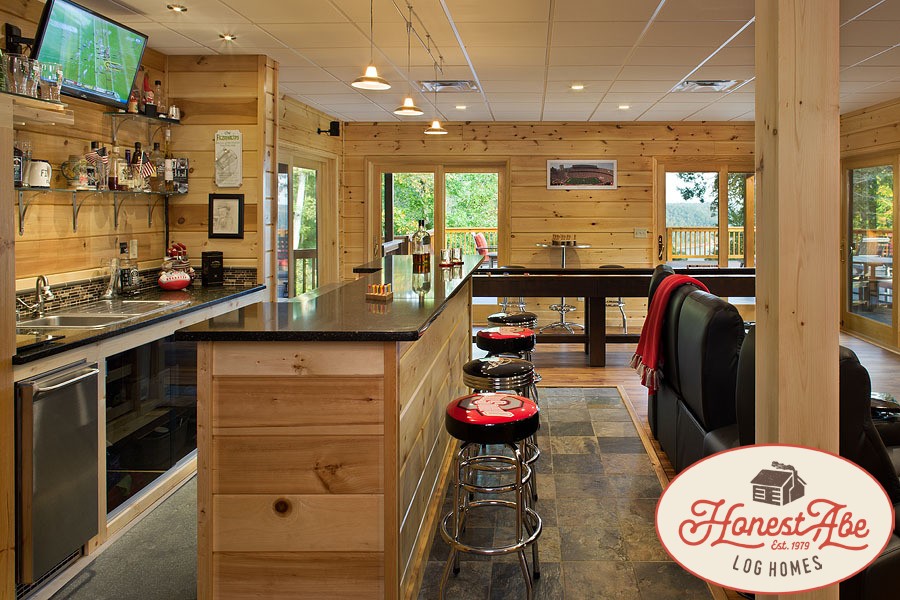
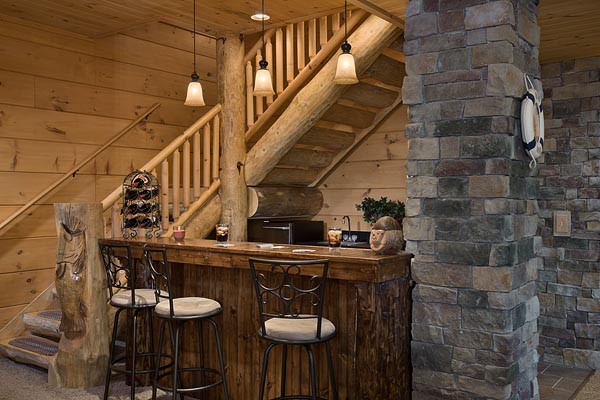
A cozy wet bar of rustic wood construction was nestled into the space underneath a staircase of this Honest Abe home.

